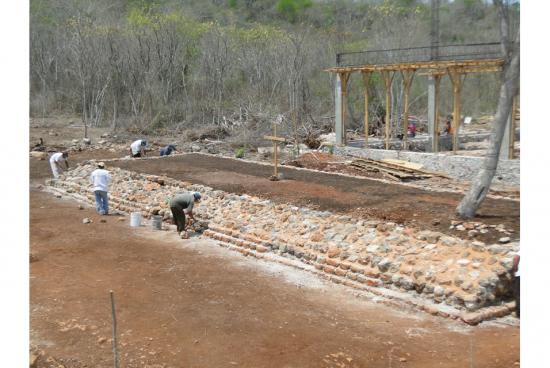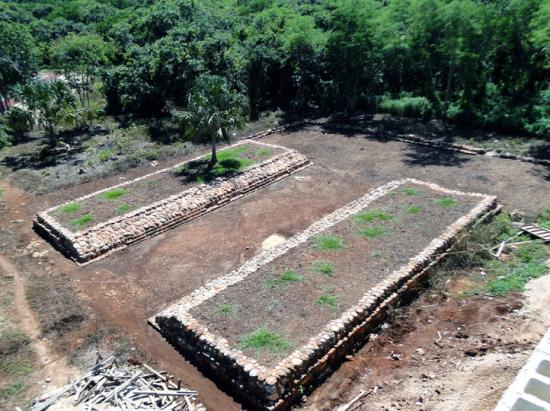Mexican archaeologists find ancient ball game court on construction site of basketball court
Source - http://artdaily.com/news/68690/Mexican-archaeologists-find-ancient-ball-game-court-on-construction-site-of-basketball-court#.UyGJyfl5PVQ[/url]
Photos : INAH
HALLAN JUEGO DE PELOTA MAYA
Source -http://www.inah.gob.mx/boletines/14-hallazgos/7107-descubren-juego-de-pelota-en-yucatan

Archaeologist Eunice Uc added that the structure was identified with the same architectonic characteristics as the parallel buildings that make up the pre-Hispanic Ball Game courts, which is why INAH immediately started the salvage in order to preserve this heritage which was evidently used as a ritual center. Photo: Centro INAH Yucatan.
In the state of Yucatan, including the city of Merida, they have discovered 26 pre-Hispanic ball courts for the Ball Game ritual, but there never had been a discovery of one during the construction of a school’s basketball court, as it happened in the West Technological University (UTP), in the municipality of Maxcanu.

El Juego de Pelota tiene una orientación norte-sur, conformado por dos edificios paralelos y relativamente estrechos.
Archaeologist Eunice Uc, investigator of the INAH Center in Yucatan, just gave word of the finding, and was in charge of verifying the information that was presented by the UTP to INAH, through its principal Rossana Alpizar Rodríguez, when the pre-Hispanic vestige was found as they excavated in order to build the basketball court at the foot of a hill, in an area that had never been explored by archaeologists. Rossanna Alpizar narrated: “In order to cover the recreational activities for the students that attend UTP, in 2012 we started to build a basketball court. We chose an area covered in grass, at the foot of the puuc (hill in Mayan language), but when we introduced digging machinery, it crashed into a hard stone which was impossible to move. “It was a pink stone that seemed ancient, so we immediately called INAH so they would check it out. The archaeologist that came to the university in order to carry out a report told us: The Mayan are way ahead of you, you can’t build your court because a pre-Hispanic one already exists here: it’s a Ball Game court”. Archaeologist Eunice Uc added that the structure was identified with the same architectonic characteristics as the parallel buildings that make up the pre-Hispanic Ball Game courts, which is why INAH immediately started the salvage in order to preserve this heritage which was evidently used as a ritual center.

El Juego de Pelota mide 6.50 por 20 metros.
The construction was found at the foot of a mountain, semi buried in a plan of red earth called kankab, which is relevant because the construction was placed strategically: at the foot of a hill, and precisely at a point covered by privileged earth to farmers, since kankabal is rich in nutrients. One of the activities during the Ball Games is narrated in the Popol Vuh: “It says that the mythical twins Hunahpu and Ixbalanque faced, in ball player’s getup, the lords of the underworld who are finally defeated, thus conquering death and giving way to life; this myth continues with the resurrection of the twins father who transforms into the corn god; this suggests there is a huge link between this deity and the ritual game that took place in these sacred spaces”.